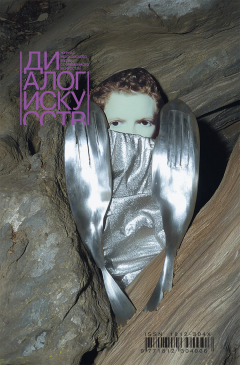A conversation with Dmitry Bulatov, a techno-optimist, artist, theorist, organizer of exhibition and publishing projects in the fields of scientific art and new media.
|
|
Svetlana Gusarova. What does the process of training “Semen” involve? Why is this the eleventh version? What are its ten predecessors doing?
Dmitry Bulatov. The output of dialogue systems largely depends on the databases that are used for training them. Datasets vary. We use books on philosophy and art available in the public domain. The different versions of “Semen” correspond to database changes and program testing. The previous incarnations have ascended into digital heaven. At the moment we are practicing with Semen task-oriented dialogues. I am also training it to search specific information. We are mastering the lower level of the profession, which includes managing logistics and making light conversation on art. In the future we plan on elaborating a program that could replace the curator. A curator replaceable by an algorithm is pure nothing. This is what in fact the curator is.
S.G. However uploading into “Semen-11” books on art and philosophy and an image database will not suffice to make a curator of it. How can you train it to generate new meanings?
D.B. I think it will happen gradually. When reading through curatorial texts, we are not always a hundred percent sure whether they were written by a smart bot or a flesh-and-blood curator. The nonsense of curatorial writing can also be a source of inspiration, for example with Selçuk Artut. He developed a program that generates descriptions of art projects imitating the style of curatorial texts. Usually these descriptions are rife with abstruse terms and contradict themselves to the point of becoming almost meaningless.
S.G. We are struggling to establish inter-human communication and now we are about to face the need to build relationships with non-humans and half-humans. How should we prepare for the future?
D.B. Science has accumulated a huge amount of experience when it comes to dealing with ambivalent organisms. Take for example the exploration of microbial life, which is both local and ubiquitous, inorganic matter (nanotechnologies) and the whole range of paradoxes in physics. All of these practices are connected with the notion of a “demon” – a thought experiment that makes possible the existence of such paradoxes. Take for example Laplace's demon, Maxwell's demon and Schrödinger's cat, which remains both alive and dead – there are countless such examples. Such a demon remains a necessary element of these intellectual games when the surrounding environment is a complex system that requires us to possess super-human capabilities in order to grasp it. In art it is the same – there are the demons of Duchamp, Malevich, Beuys and Warhol. In other words, a “demon” – whether it comes from science or art – gives us a means to think the unthinkable while at the same time speaking to the presence of this unthinkable aspect of our lives. So inventing demons is the most suitable way of dealing with the unknown which is part of our present and future.
DI#1-2018




